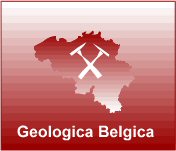CCS has the potential to reduce overall mitigation costs and increase flexibility in achieving greenhouse gas emission reductions. The UN Climate Panel sees CCS as offering great potential: in various scenarios it accounts for between 15 and 55 percent of the reduction of greenhouse gases by 2100.
The EU also is promoting CCS, suggesting that it be included in the trading of emission rights, for example. CCS is based on capturing carbon dioxide (CO2) from large point sources such as fossil fuel power plants and storing it instead of releasing it into the atmosphere. CCS applied to a modern conventional power plant could reduce CO2 emissions to the atmosphere by approximately 80-90% compared to a plant without CCS. Storage of CO2 is envisaged either in deep geological formations (geological sequestration), in deep ocean masses, or in the form of mineral carbonates.
Because of environmental constraints ocean storage is not considered by the EU as an option.
Geological formations are currently considered the most promising sequestration sites: they are estimated to have a storage capacity of at least 2000 Gt CO2 . Alternatively, CO2 can also be trapped or recycled in the production of new products or building materials.
Under the i-SUP2010 theme "Sustainable development and climate change mitigation - Carbon dioxide capture and storage", contributions under this umbrella of research and development are warmly welcomed.
Plenary lecture:
"Lecture CO2 Capture and Storage; Where are we now and what are the challenges we face"
John Gale, General Manager of the IEA Greenhouse Gas R&D Programme, Cheltenham, Gloucestershire, UK
| Theme 1: CO2 capture technology |
| Capturing CO2 can be applied to large point sources, such as large fossil fuel or biomass energy facilities, industries with major CO2 emissions, natural gas processing, synthetic fuel plants and fossil fuel-based hydrogen production plants.
The production of energy from fuels is divided in the post-combustion, pre-combustioin or oxyfuel routes.
For future energy production from fossil fuels, a.o. gas separation by membranes as well as chemical looping combustion (CLC) are being considered.
Topics:
- Pre-combustion capture technologies
- Post-combustion capture technologies
- Oxy-fuel capture routes including chemical looping technologies
Invited lecture:
"Overview of capture technologies in industrial installations"
Philippe Mathieu (University Liège – BE) |
| Theme 2: CO2 geological sequestration |
Geological storage or geological sequestration of CO2involves injecting carbon dioxide, generally in supercritical form, directly into onshore or offshore underground geological formations.
Depleted oil and gas fields, deep saline formations, unminable coal seams (with related ECBM – enhanced coal bed methane recovery) and basalt formations are currently being investigated.
Various physical and geochemical trapping mechanisms are suggested to prevent the CO2 from escaping to the surface.
Topics:
- Storage technology and mechanisms
- Site selection criteria and methods
- Risk assessment and environmental impact and monitoring
Invited lecture:
"Modelling CO2 storage in the Bunter Sandstone"
Sam Holloway (British Geological Survey – GB)
|
| Theme 3: Mineral carbonation and the industrial utilization of CO2 |
CO2 is brought into contact with metal oxide bearing materials with the purpose of fixing the CO2 as carbonates. Besides naturally occurring silicate rocks, suitable materials include also alkaline industrial residues.
Mineral carbonation of the latter residues eventually leads to the production of secondary building materials.
Furthermore, the industrial use of CO2 as a gas or a liquid or as feedstock for the production of chemicals contributes to keeping captured CO2 out of the atmosphere by the storage in valuable anthropogenic carbon products (the carbon chemical pool).
Topics:
- Organic chemicals and polymers
- Fuel production using CO2
- The capture of CO2 in biomass
Invited lecture:
"Mineral Sequestration, an important complement to conventional geological storage"
Klaus.S. Lackner (Earth institute at Columbia University – USA)
|
| Theme 4: Legal and regulatory issues |
|
Trustworthy international, EU or national legal frameworks for CCS, acknowledged by relevant stakeholders and institutions, are conditional for CCS deployment and will also influence the public perception.
Policy incentives, designed to make CCS into a commercially viable technology, are important to support CCS deployment as well.
Precedents from the oil & gas and the mining industry provide a basis for a legal and regulatory framework for CCS.
However, more is needed in dealing with issues unique to CCS, including subsurface ownership and property rights issues, short- and long-term liability, classification of CO2 and appropriate measurement, monitoring, and verification requirements.
Topics:
- Public perception
- Policy incentives
- Legal and regulatory frameworks
Invited lecture:
"Legal Aspects of Carbon capture and storage: ensuring safe, secure ghg mitigation"
Brendan Beck (International Energy Agency - IEA)
Scientific Advisory Board
Name |
Organization |
Theme 1: Capture
|
- Dr. Hans-Peter Buchkremer (Forschungszentrum Jülich, Germany)
- Prof. Dr. Juan Adanez (CSIC Zaragoza, Spain)
|
Theme 2: Geological sequestration
|
- Dr. Kris Piessens (Belgian Geological Survey, Brussels, Belgium)
- Prof. Sevket Durucan (Imperial College, London, UK)
- Prof. Rudy Swennen (KULeuven, Belgium)
- ir. Dr. Pierre Le Thiez (GEOGREEN, France)
|
Theme 3: Mineral carbonation
|
- Prof. Ron Zevenhoven (Abo Akademi University, Turku, Finalnd)
- Prof. Carlo Vandecasteele (KULeuven, Belgium)
- Prof. Marco Mazzotti (Swiss Federal Institute of Technology, Zürich, Switzerland)
- Prof. Renato Baciocchi (University of Rome “Tor vergata”, Rome, Italy)
|
Theme 4: Legal and regulatory framework |
- Dr. Heleen Groenenberg (ECN Policy Studies, The Netherlands)
|
|
| Partnerships |
In association with:

Geologica Belgica
|
|


